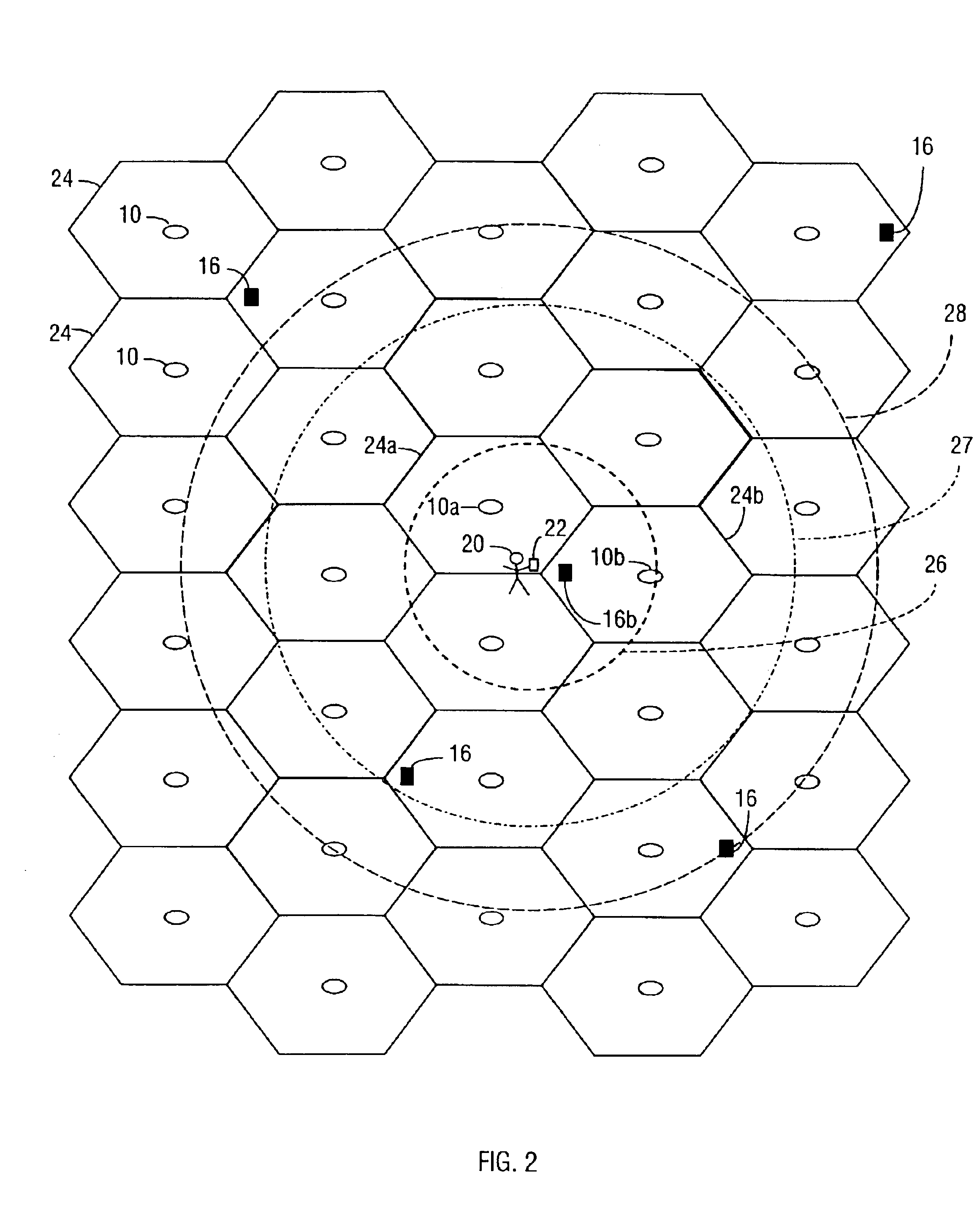Forward link repeater frequency watermarking scheme
a repeater frequency and forward link technology, applied in the field of position location systems, can solve the problems of not being able to obtain enough gps measurements to determine the location of the receiver, not being able to accurately locate the gps receiver, and only limited success of aflt (including a-gps) for position location purposes, so as to reduce the time to fix
- Summary
- Abstract
- Description
- Claims
- Application Information
AI Technical Summary
Benefits of technology
Problems solved by technology
Method used
Image
Examples
example implementation
of FLRFWM
[0182]In one example embodiment, the FLRFWM is applied to a CDMA system to optimize position location performance. The results of the example implementation, for reasonable target error event probabilities, such as false alarm probability (PFA), probability of missed detection (PMISSDET), and probability of missed identification (PMISSID) of about 10−2, include identification of a FL frequency watermark for pilots down to about −16.9 dB in about 358 microseconds (ms), −19.2 dB in about 712 ms, −21.2 dB in about 1.423 sec, and −23.1 dB in about 2.844 sec.
[0183]In this example implementation, the modulation waveform applied to the forward link signal by the FM modulator is a periodic square wave of magnitude + / −fA and period of 2T, where fA in this example implementation is 50 Hz, and T is in [10*64: inc:11*64] chip range. It should be noted that the increment inc is chosen to achieve uniform spacing of watermarks in frequency for easier detection, and the value is then trunc...
PUM
 Login to View More
Login to View More Abstract
Description
Claims
Application Information
 Login to View More
Login to View More - R&D
- Intellectual Property
- Life Sciences
- Materials
- Tech Scout
- Unparalleled Data Quality
- Higher Quality Content
- 60% Fewer Hallucinations
Browse by: Latest US Patents, China's latest patents, Technical Efficacy Thesaurus, Application Domain, Technology Topic, Popular Technical Reports.
© 2025 PatSnap. All rights reserved.Legal|Privacy policy|Modern Slavery Act Transparency Statement|Sitemap|About US| Contact US: help@patsnap.com



